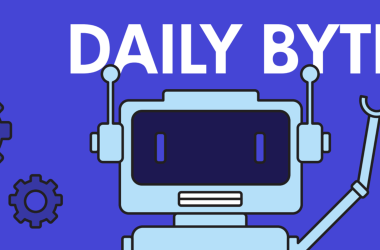DLP, an acronym for Data Loss Prevention, is a practice of spotting possible data breaches and ex-filtration sharing. DLP’s best practices and solutions prevent potential data loss by detecting, monitoring, and filtering sensitive data even when the end-user device, networks, and data storage are still in use. One of the primary use cases of Data Loss and Prevention strategies/ solutions is in preventing sensitive data from being exposed to unauthorized entities and intruders. It includes implementing a SIEM solution and incorporating IDS/IPS into your security system to protect your corporate data.
It’s critical to be cyber-ready with proper DLP tools and solutions because sometimes an unintentional or accidental leakage of crucial data from unauthorized intruder access or malware attack can cause significant monetary loss and damage the company’s reputation.
How Much Does an Average Data Breach Cost?
Across companies worldwide, a data loss might cost around a whopping $3.9 million on average. And the cost has further surged 13% from 2020 to 2022!
As new businesses evolve daily and continue to grow globally, the cyber threat landscape is expected to rise with even more force.
Don’t worry because different types of DLP strategies will act as the perfect solution and help outline where and how you need to protect the data so you don’t suffer a data breach. However, before creating an effective DLP strategy, companies must first understand the different types of DLPs and how they work or benefit businesses.
Types of Data Loss Prevention
Although companies can have one managed SIEM service to enjoy DLP practices in a suite and get rid of data breaches once and for all, it’s good to know that there are four different types of DLP software. The four types of DLP solutions are Network DLP, Endpoint DLP, Email DLP, and Cloud DLP.
Let’s understand each type of DLP solution and how it works.
#1 Network DLP
Network DLP solutions offer enhanced visibility into your organization’s network, helping you detect, monitor, and control the information flow in the company’s network (email or web). A DLP software also allows businesses to:
Analyze the company’s network traffic and keeps them compliant with regulations while establishing significant security policies to mitigate data loss risks.
By deploying security policies, the Network DLP software can allow, audit, block, isolate (suspicious entities), encrypt data, and carry out specific other pre-set actions to secure your company’s information security policies.
Another benefit of deploying a Network DLP is that you can execute DLP policies onto devices connected to your business network (provided all devices must be connected to the given network).
#2 Endpoint DLP
Most enterprises’ primary and critical tools today are endpoint devices like desktops and laptops (even cell phones). With more and more endpoints being scattered to different remote locations, the chances of employees accessing the company’s required workload increase multifold. An endpoint DLP solution is critical to managing all these endpoint activities, including your company’s servers. Endpoint DLP also lets you:
Monitor your company’s essential information present or shared across different endpoints and help prevent your organization’s confidential data from getting lost or misused by bad actors.
By deploying an Endpoint DLP, you can always protect the data even when end-user devices are not connected to the network (internet), regardless of using the company’s network or a public network.
However, one disadvantage of endpoint DLP is that it requires manual installation and maintenance for each endpoint. Thus, SMEs can turn to managed EDR solutions for complete safety for their endpoints.
#3 Cloud DLP
Moving to the cloud is the next big change that modern businesses are making because they know the ‘Cloud is the future.’ With enterprising quickly migrating their business data and applications to a cloud environment, Cloud DLP becomes a must-have to keep business-sensitive data from being leaked, lost, or mishandled.
The core DLP solution components have stayed the same since the beginning of DLP practices till today, except for DLP for public/ private clouds. Many advanced organizations are storing and accessing their data workload in the cloud using Amazon, ACE, or Google cloud.
Listed are other significant benefits of deploying a Cloud DLP:
Cloud DLP technologies ensure data protection by encrypting sensitive data stored in the cloud and providing that the organization authorizes the senders and recipients of the data.
Some advanced Cloud DLP service providers like Ace Cloud Hosting can help identify, classify, remove, quarantine, encrypt, or modify your company’s confidential data before it is shared in a cloud environment. It protects your business network from data breaches, unauthorized access, malicious insiders, and accidental data exposure.
The best part about having a Cloud DLP service from a managed SIEM provider is that you don’t need any software or hardware and still enjoy strong DLP protection compared to the other solutions. Your IT team might require basic technical knowledge to deploy it efficiently.
#4 Email DLP
Emails have always been the favorite target of cyber attackers as these are highly trusted platforms, used globally, and can be easy to penetrate. Hence, protecting your email platform and servers from acute data loss and unauthorized access with advanced Email DLP is critical.
- Email DLP solutions help monitor and filter emails sent across an organization network within the organization and external parties. The technique used to carry out the process generally depends upon specific criteria, such as sensitive keywords.
- Email DLP solution is vital in reducing the amount of data leakage from emailing. However, just using an Email DLP solution is not enough as it doesn’t account for protecting against other ways of data leakage, like document sharing.
Businesses must move to a fully managed Email security solution provided by trusted security experts like ACE Cloud Hosting to have a fail-proof email network security.
Is There a Common Solution for DLP?
Managing a separate in-house team for each type of DLP solution is not feasible. Thus, businesses must find standard ground rules and Data Loss Prevention best practices to prevent data leakage. One such step can be identifying your business-sensitive data and restricting access to that data based on user roles and responsibilities. Your system administrators can assign different authorization levels appropriately depending on the data the employees handle.
Opt for the Managed SIEM Services for data loss and prevention and to avoid severe financial loss and negative press. Experienced managed DLP service providers such as ACE offer comprehensive DLP services within their security suit while fulfilling the compliance requirement for an organization subject to HIPAA, PCI DSS, ITAR, GDPR, and other regulations. With real-time visibility into all networks, devices, and applications, and advanced threat intelligence, ACE managed SIEM solution keeps your data protected at all times.





